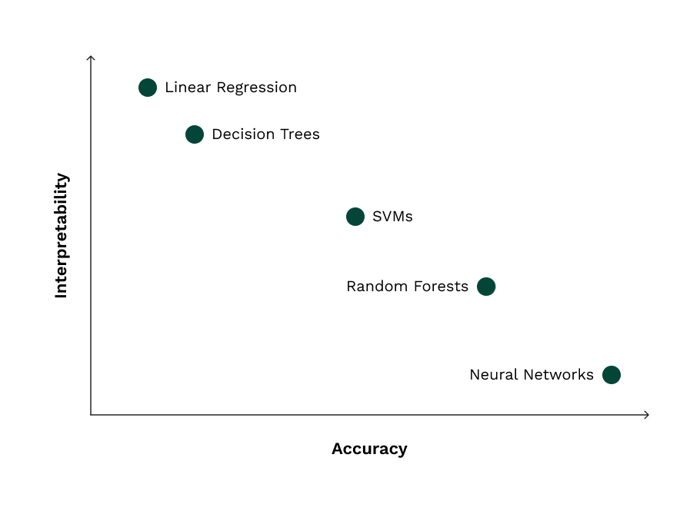The Data Handbook
How to use data to improve your customer journey and get better business outcomes in digital sales. Interviews, use cases, and deep-dives.
Get the book Analytics and data science have evolved at an explosive pace in recent years. Both the availability and utilisation of data has improved considerably in the last five years. Analysts and data scientists have worked very hard to constantly make better recommendation models, segmentation, forecasts and other data products.
Analytics and data science have evolved at an explosive pace in recent years. Both the availability and utilisation of data has improved considerably in the last five years. Analysts and data scientists have worked very hard to constantly make better recommendation models, segmentation, forecasts and other data products.
However, the fast pace has not come without its challenges. One adverse effect is how the excessive use of data can stagnate the learning and creativity in business teams that thrive on understanding their customers. Companies should develop the role of analysts and data scientists towards an approach where their first priority is to support the team’s learning and gradual improvement of customer understanding. More advanced and recent functionalities should only be taken into use once the culture of the organisation is mature enough to utilise them.
A long and winding path towards data culture
While there has been a lot of talk about data as the new “oil” in business, many organisations have faced challenges in getting started with its use. Three key factors of success are shared with organisations that have managed to make data work for them: the availability of data, a widespread data-driven culture, and easy use of data in production environments. However, deploying too quickly can pose problems for the development of a strong data culture.
A data-driven culture is key for utilising data to develop a business. In a modern organisation, the use of data cannot be limited to only analysts and data scientists. Data must be available in an easy-to-access format in the places where decisions are made. People themselves must seek data to find solutions for the questions that they need answers for. Often, the search is even more important than actually finding the answers. Surprising observations about the data can inspire one to look at things from a fresh perspective.
However, data culture does not go from zero to sixty. It is best developed by refining existing information step by step. Customer segmentation is an excellent example. Assuming that the organisation has a decent repository of data and an existing customer base, modern data solutions can be used to build an effective segmentation model in mere moments. This model can be used to split customers and potential customers into a few main groups, each of the groups to subgroups and these further to more specific classifications, if necessary.
Today, such modelling is based on an enormous amount of data from every user. At best, machine learning methods can create incredibly precise models. However, there is an intrinsic contradiction: reaching very high precision requires such a great number of dimensions that are not understandable to humans. Even so-called “explainable machine learning” solutions require the recipient to have a rather deep understanding of data for it to make any sense.
 More accurate models are often more difficult to interpret.
More accurate models are often more difficult to interpret.
Often, the easiest way of making the models and complex interactions understandable to people is to first create very simple analyses, which can then be built upon. For example, a team that operates a business with three main segments can use gradual exploratory analysis to find out why certain solutions do not work consistently within a segment, and fine-tune them. This allows them to understand differences within the segment, validate them against the data and further split the segment into smaller subgroups based on perspectives that are relevant to the team’s activities.
Even if this method would finally lead to the exact same subsegments that an automated model would have reached without the exploratory approach from the team, the gradual process is likely still better because it allows members of the team to understand their customers, and anticipate their needs and reactions.
So, the benefit of customer understanding accrued within a gradual data culture is not that this learned information would be “better” compared with a model produced by a modern data solution. The benefit of a diffuse data culture is based on people’s ability to question and re-process information after the fact.
In their recent Harvard Business Review article “Why AI Will Never Replace Managers”, Frank Martela and Jukka Luoma wrote about the shortcomings of artificial intelligence in reframing problems. The ability of team members to come up with new hypotheses and create new ways of contextualising the organisation’s field of operation is based on their understanding and expertise. This expertise must be built gradually, which cannot be disregarded even though machine learning models can create more precise models of the current situation much quicker than people can.
“Your very own black box is still a black box”
In recent years, the market has been flooded with numerous new products for creating data-driven solutions that can be deployed directly to websites, advertising platforms or other systems. These tools make personalisation, segmentation and reaching customers so easy that you no longer have to actually understand the customer. The analytics system analyses the customers’ activities on the website, finds the most promising products to offer to each customer and algorithms automatically find more people like them to attract to the site. Humans no longer have to understand what kind of products are appealing to different customer groups.
Unfortunately, many of these solutions suffer from little (or even nonexisting) transparency. Black box solutions have been a problem in digital business for years, but the challenges they pose have not been eliminated despite many developments in the sector. Many have tried to get rid of black box solutions by building their own services to bypass them and guide the personalisation, website optimisation or advertisement auctions through various APIs, utilising the company’s own data.
Although such solutions can produce good results quickly, they do not solve the basic problem of them being black box solutions. Rather they are new black boxes that you can call your own. From the perspective of building the organisation’s customer understanding, if the machine learning model used to do the task is too complicated for humans to understand, it is just as problematic to use the “Lookalike” audiences offered by Facebook or Google. It doesn’t really matter if you have constructed it using first-party data.
It should be noted in this context that I am in no way making an argument against the use of machine learning models – even pre-made ones. Used properly, they are extremely efficient tools that can be used to get an organisation quickly up to speed in reaching its goals. Nonetheless, it is essential to plan their use well in order to avoid unnecessarily complicating the organisation’s learning processes and adversely affecting the development of the team’s customer understanding.
If the automatisation of business is taken too far, team members can easily fool themselves into thinking that simply repeating the same patterns and automatic models again and again will inevitably lead to results. This is a dangerous idea and will almost always cause issues if (and when) the situation changes in a way that causes the old operating model to no longer be feasible or effective.
The role of a data analyst in an organisation
This approach puts an analyst in a very different role within an organisation compared to what we are used to. Rather than the analyst helping out the team members by producing answers to questions posed by other team members or preparing models to meet the needs of the business, the essential part of their role becomes sparring with people and encouraging them to utilise data themselves as well as teaching them how to do it. Seeing the analyst more as an enabler and “data culture guide” as opposed to the implementer of individual analyses can also highlight tasks related to the deployment of various tools and data platforms.
This in no way means that analysts themselves would never again make any analyses and prepare them for teams. That will still be a part of the role of data professionals in the future. The most difficult analyses and the most complicated research will still be carried out by data analysts. However, if we really think that data is the new “oil” and its efficient use is a pillar of business strategy, then analysts will certainly have to pay increasing attention to their role as leaders and enablers of a data-driven culture.
Such a role is considerably more strategic compared to the tasks of a traditional analytics professional. Even though questions posed by the analyses have always provided answers to strategic questions, forming and implementing a strategy that promotes data culture is a key question in which analysts must be able to at least help the company’s management. Preparing such a strategy without a solid understanding of the practices and opportunities related to data analysis is difficult, if not impossible.
Analysts as creative directors
Often, the role of an analyst has been viewed as a very technical one, with social skills being of secondary importance. I think in a data-driven culture this expectation must be turned upside down. It will be increasingly important to identify the creativity in the role of a data analyst – without compromising on technical proficiency.
Analysts must be capable of enabling other people’s creativity by offering them the opportunity to easily and sensibly experiment and explore data that is relevant to them. This requires both creativity in the implementation as well as an understanding of how to use numbers to promote creative thinking and inspire people.
Promoting the availability and ease of use of data will also open up new possibilities for its use. As data experts, analysts must come up with creative solutions for how image recognition, text understanding and openly available data sources can be used to develop customer understanding that is not only available via the analysts own special expertise. How can the analyst enable more advanced data analysis methods to be gradually deployed in a way that allows them to also be used by people who have less experience in utilising data?
In the end, analysts still aim to utilise advanced data solutions and models to reach the organisation’s goals. This has been true for a long time and it is not about to completely change. Nonetheless, it will require leadership and skill from the analysts to identify ways for developing data culture and customer understanding throughout the organisation in a way that allows the most advanced – and often for the analyst the most interesting – solutions to truly support the organisation’s learning process.
This article has originally been published in Finnish in the newest issue of the Finnish analytics magazine Analyytikko – order your copy here.
Does the message of this article resonate with you? You should consider working with us! We at Columbia Road are constantly looking to hire new fun and skilled Date Engineering Consultants (and developer/designer/martech consultants) to work with! Read more about us on our careers page to find out why you should work at Columbia Road and apply 👇
The Data Handbook
How to use data to improve your customer journey and get better business outcomes in digital sales. Interviews, use cases, and deep-dives.
Get the book




